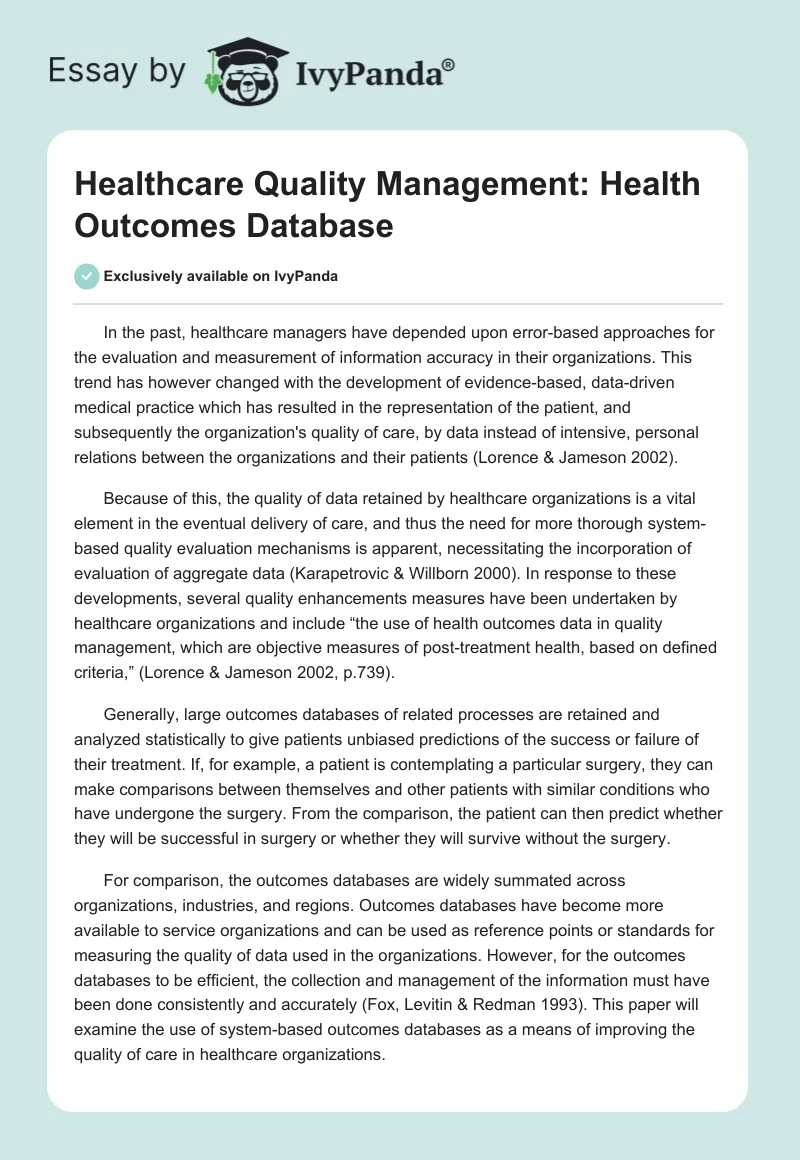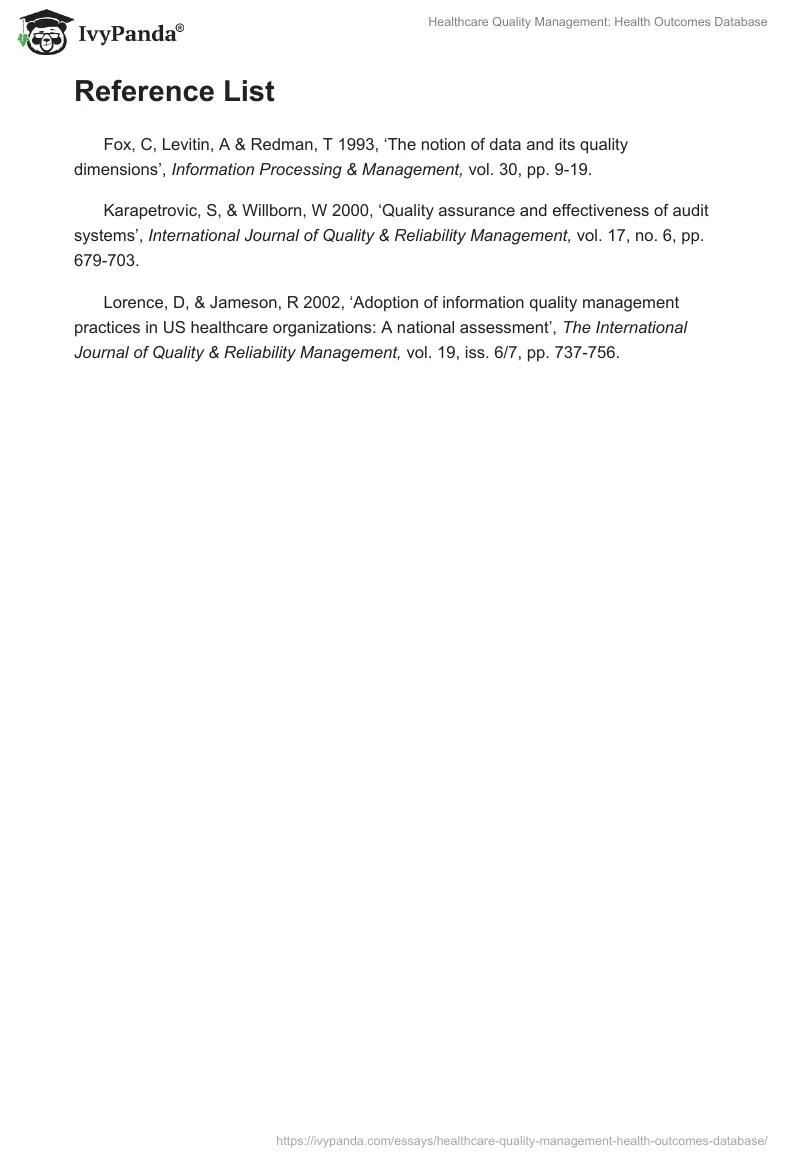In the past, healthcare managers have depended upon error-based approaches for the evaluation and measurement of information accuracy in their organizations. This trend has however changed with the development of evidence-based, data-driven medical practice which has resulted in the representation of the patient, and subsequently the organization’s quality of care, by data instead of intensive, personal relations between the organizations and their patients (Lorence & Jameson 2002).
Because of this, the quality of data retained by healthcare organizations is a vital element in the eventual delivery of care, and thus the need for more thorough system-based quality evaluation mechanisms is apparent, necessitating the incorporation of evaluation of aggregate data (Karapetrovic & Willborn 2000). In response to these developments, several quality enhancements measures have been undertaken by healthcare organizations and include “the use of health outcomes data in quality management, which are objective measures of post-treatment health, based on defined criteria,” (Lorence & Jameson 2002, p.739).
Generally, large outcomes databases of related processes are retained and analyzed statistically to give patients unbiased predictions of the success or failure of their treatment. If, for example, a patient is contemplating a particular surgery, they can make comparisons between themselves and other patients with similar conditions who have undergone the surgery. From the comparison, the patient can then predict whether they will be successful in surgery or whether they will survive without the surgery.
For comparison, the outcomes databases are widely summated across organizations, industries, and regions. Outcomes databases have become more available to service organizations and can be used as reference points or standards for measuring the quality of data used in the organizations. However, for the outcomes databases to be efficient, the collection and management of the information must have been done consistently and accurately (Fox, Levitin & Redman 1993). This paper will examine the use of system-based outcomes databases as a means of improving the quality of care in healthcare organizations.
Reference List
Fox, C, Levitin, A & Redman, T 1993, ‘The notion of data and its quality dimensions’, Information Processing & Management, vol. 30, pp. 9-19.
Karapetrovic, S, & Willborn, W 2000, ‘Quality assurance and effectiveness of audit systems’, International Journal of Quality & Reliability Management, vol. 17, no. 6, pp. 679-703.
Lorence, D, & Jameson, R 2002, ‘Adoption of information quality management practices in US healthcare organizations: A national assessment’, The International Journal of Quality & Reliability Management, vol. 19, iss. 6/7, pp. 737-756.


